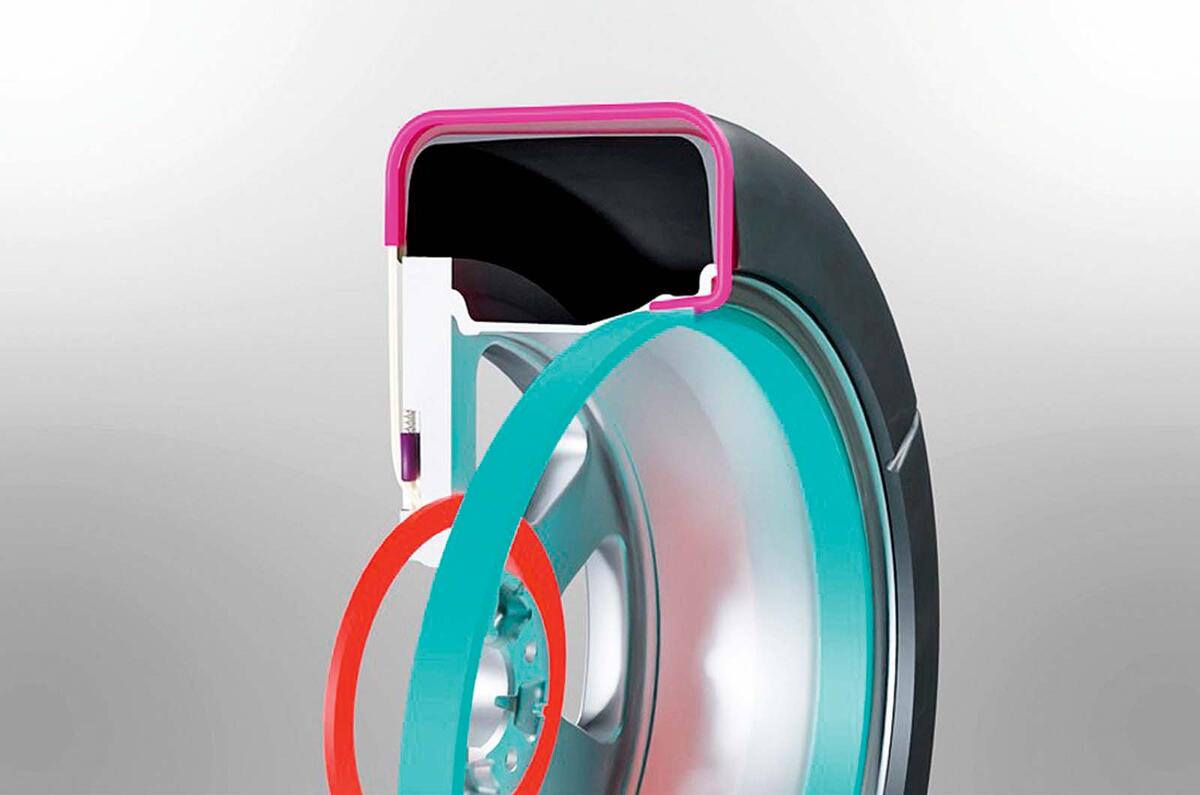Getting a grip in snow and ice is something drivers have been grappling with since the car was invented.
Ways to avoid getting stuck range from winter tyres to snow socks, but few are quite as wacky as a new development from the Hyundai Motor Group, which the firm is patenting and hopes to bring to mass production one day.
The new technology is still in search of a snappy title; for now it goes by the name of Shape Memory Alloy Integrated Snow Chain Technology.
Imagine a series of J-shaped metal rods running up the side of the wheel, then forming the crook of the J over the top of the tyre and down as far as the wheel rim on the inside of the wheel.
What you have then is a set of six bars a few millimetres in diameter across the tread, similar to the paddles of an old-fashioned water wheel. That’s how the wheel and tyre would look when the hoops are in the extended position.
The tyres are designed to match, with corresponding deep grooves across them, into which the bars retract for driving in fairer weather.
The Shape Memory Alloy part of the name relates to the bars’ extension into snow chain position and retraction back into normal use position, where only the rubber tread of the tyre is in contact with the road.
The secret lies at the tip of the long section of each J shape in the side of the wheel. It deforms when it receives an electrical signal at the press of a button, raising the bar into the snow chain position.
When the button is pressed again and a second signal is received, the memory alloy recovers its previous shape and so the device retracts back into the groove below the surface of the tyre.
It’s easy to imagine that making the operation of the system robust enough might be tricky, considering the beatings that tyres receive. But given the fiddly nature of fitting snow chains, the new technology could be a blessing for drivers who live in places where such things are a regular necessity.
Driving in winter conditions is something that many drivers probably don’t take seriously enough in the UK. In Germany, Sweden and other parts of Europe, it’s a legal requirement to fit winter tyres during the winter months, but not over here.
The law regarding snow chains or studded tyres isn’t specific, but it’s quite clear that any tyre-related defect or otherwise that causes damage to a road is illegal.
Snow socks are okay to use, along with any other non-road-surface-damaging commercial device, but whether Hyundai’s new technology will ever make it onto the road depends on whether it would chew up the Tarmac.
In theory, it could be driven on the highway retracted and deployed when transitioning to off-highway surfaces.
That may make it attractive to drivers living in the hardier climes where, even with four-wheel drive, getting around in a harsh winter can prove a real challenge.




Join the debate
Add your comment
I would imagine that kerbing your wheels, as so many drivers seem to like to do these days, could play havoc with this system when its not in use.
Scandinavians seem to manage perfectly well with winter tyres, studded when necessary.
Or, how about a Tyre compound that becomes sticky when it goes below a certain temp?, or a road surface that when cold embedded road salt leeches out?,nobody really has come up with a solution for this icy problem.